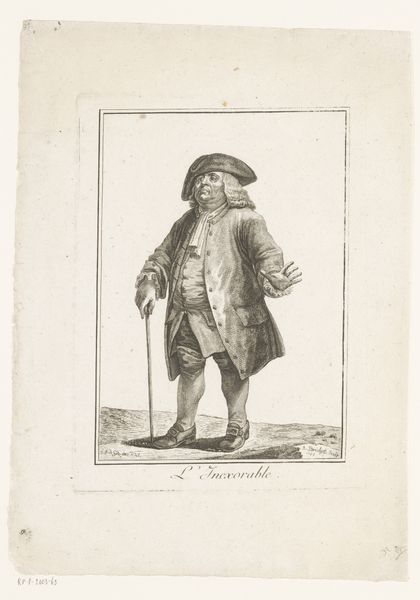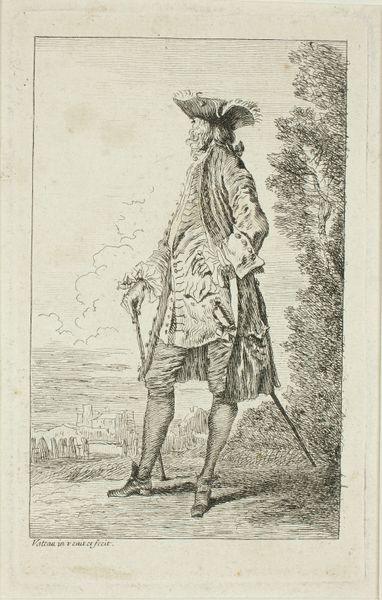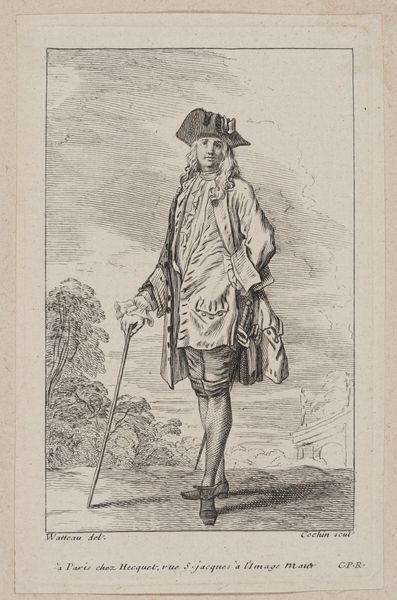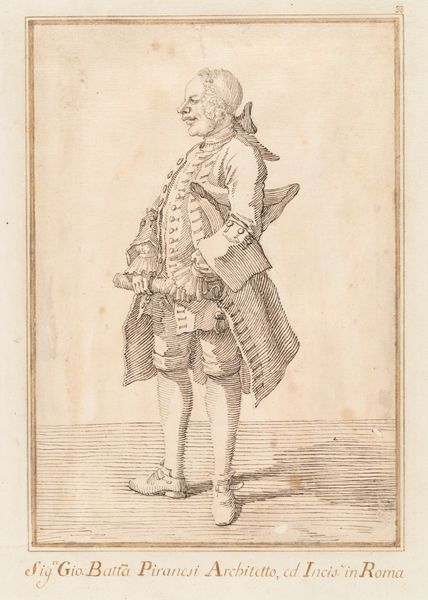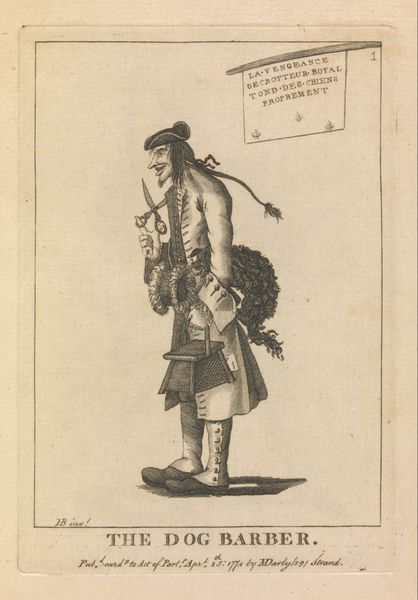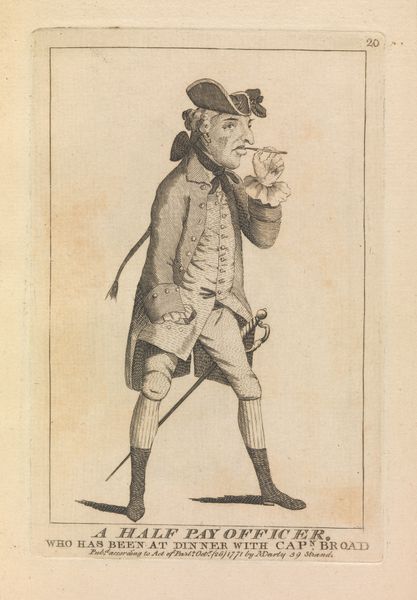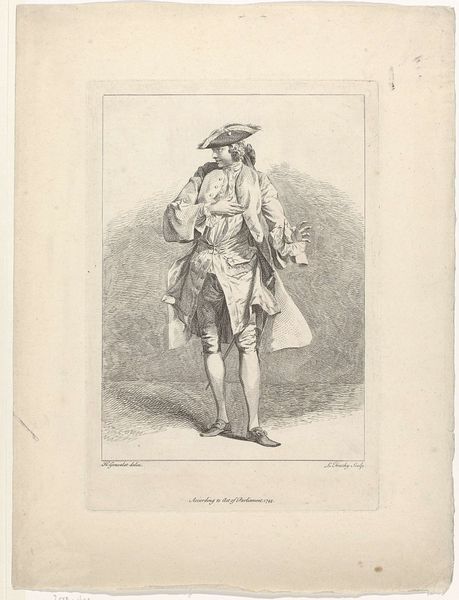
Dimensions: height 325 mm, width 213 mm
Copyright: Rijks Museum: Open Domain
Editor: This is "Rondreizende prenthandelaar," or "Traveling Print Seller," by Johann Christian Brand, likely created between 1775 and 1800. It’s an engraving and etching – it feels very much of its time. What can you tell me about it? Curator: Well, consider the production. Engravings and etchings like this one weren't simply aesthetic objects; they were commodities. Think about the labor involved: the engraver meticulously cutting into the metal plate, the printer pulling each impression, the very distribution networks, even someone like our travelling salesman becomes part of the production and distribution process of art. It’s a micro-economy. Editor: So, the print isn't just *of* a print seller, it *is* part of a system of print selling? That’s fascinating! Curator: Precisely! It points to the rise of a commercial art market, democratizing art by making it accessible beyond the elite circles. Each print replicated the original, enabling the proliferation of images and ideas. Who did it reach and how? This work highlights the social and economic role of images, a new phenomenon at the time. The proliferation of imagery impacted knowledge, propaganda, and control. What kind of prints might he be selling, do you imagine? Editor: Judging by the sample on his carrying case, maybe historical or allegorical subjects? Something improving, designed for wider consumption perhaps? It seems much less precious than artwork designed for the aristocracy. Curator: Exactly! And consider the consumer. Owning these prints allowed the aspirational middle classes to decorate their homes and engage with broader cultural narratives, further fueling demand and the processes of industrial reproduction of imagery. We tend to think about authorship but miss that artworks require labour, distribution and capital. Editor: I never thought of prints as being so connected to economics, not just artistry. It’s like a small piece of a larger material history! Curator: Indeed. The materiality of this print tells us as much, if not more, than the image itself about society and its evolving systems of value and production.
Comments
No comments
Be the first to comment and join the conversation on the ultimate creative platform.
